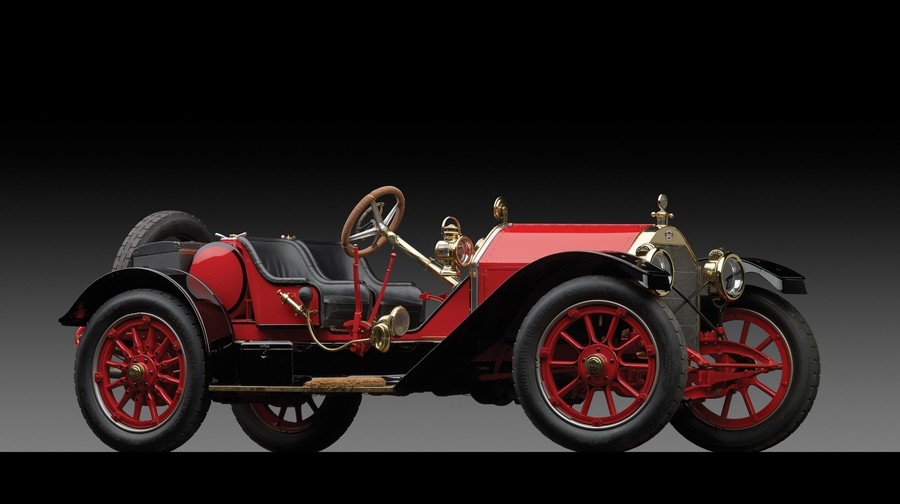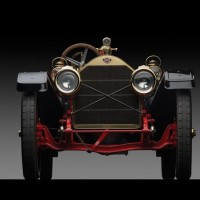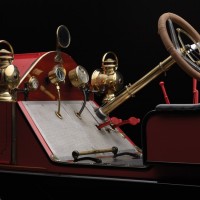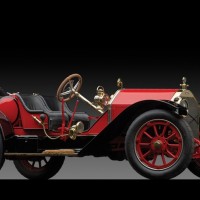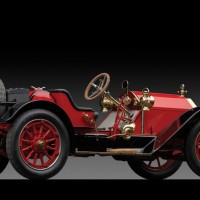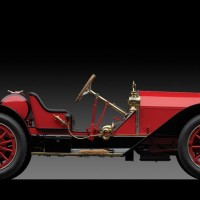SCM Analysis
Detailing
| Vehicle: | 1912 Stutz Model A Bear Cat |
| Number Produced: | 266 (in 1912) |
| Original List Price: | $2,000 |
| Tune Up Cost: | $1,500 |
| Chassis Number Location: | N/A |
| Engine Number Location: | N/A |
| Club Info: | STuTZ Club |
| Website: | http://stutzclub.com |
| Alternatives: | 1912 Simplex Model 75 Runabout, 1912 Mercer Raceabout, 1925 Miller 122 |
| Investment Grade: | A |
This car, Lot 133, sold for $770,000, including buyer’s premium, at RM’s “Art of the Automobile” sale on November 21, 2013, at Sotheby’s New York headquarters.
Harry Clayton Stutz was a remarkable engineer. In 1897, at the age of 21, he built his first car, named “Old Hickory,” and an ad in the November 1902 issue of Cycle and Automobile Trade showed a 1-cylinder engine that he developed.
Stutz was exposed to the tire industry while employed at U.S. Tire Company, and he joined the Schebler Carburetor Company, where he brought together Wheeler and Schebler, who formed the Wheeler-Schebler Carburetor Company.
Stutz designed a 4-cylinder car for the American Motor Car Company, and he was the chief engineer and factory manager for the Marion Motor Car Company. In 1910, he formed Stutz Auto Parts Company to sell the transaxles that he had designed and patented in 1909. He had yet to reach his 35th birthday.
The first Indy 500
Even with all this on his plate, Stutz was working on the design for a new automobile. During his tenure at Marion, he realized there was no better way to promote an automobile’s potential than through competitive racing. As the plans for his new car were coming together, he learned that the Indianapolis Motor Speedway was to hold a 500-mile race on Decoration Day — now known as Memorial Day — 1911. Stutz decided this would be the perfect venue to launch his new automobile, even though the race was but five weeks away.
A small crew worked around the clock on the car. With little time to spare, Stutz drove the finished product off the assembly line. Untested and untried, the car was entered in the race under the name of the Stutz Auto Parts Company with #10 on the side, and it finished a most respectable 11th place. Thus, the phrase “The Car That Made Good in a Day” was coined.
The success at Indy provided the impetus for a new car that would offer performance and reliability for less than $2,000. The Ideal Motor Car Company was formed with Harry Stutz as chief designer, although he became president when the firm was reorganized in June 1912. In addition to 4- and 5-passenger cars, Ideal produced a duplicate of the Indianapolis 500 car. The 2-passenger speedster was added to the Model A line in 1912 as the Bear Cat, the only year it would be two words.
Stutz established dealerships throughout the country, with Walter Brown responsible for sales and racing activities west of the Mississippi. Board-track racing was very popular in the American West, with tracks as far north as Tacoma, WA. It is well documented that the Stutz Bear Cat was an active participant.
Early or late, it’s original
The spectacular RM catalog stated that the car offered had been discovered in California in 1949 and was one of the earliest built — if not a prototype. The range of engine numbers for 1912 was between A104 to 1037, so A730 would indicate it was later in the year’s production. However, a letter from the Wisconsin Engine Company that was included with the car states that A730 was built for Stutz in late 1910.
Stutz authorities have determined that this car is an original and authentic Bear Cat that was most likely privately raced. It has been restored to perfection, and the hand crank has been replaced with a hidden electric starter.
Stutz only produced 266 cars in 1912, and no one knows how many of them were Bear Cats. This example is highly documented, and there is no doubt that it is original and authentic.
There are, however, no documented sales of other early Bear Cats. Gooding & Company sold a 1914 Bearcat at their 2008 Pebble Beach sale for $1,375,000. Mecum sold a 1912 Mercer Raceabout that had been converted from a Runabout for $656,250 at their Monterey 2011 sale.
In the rarified air of RM’s “Art of the Automobile” sale, most offerings went for a substantial premium, but this Bear Cat seems to have slipped through the cracks. Looks well bought from here. ♦
(Introductory description courtesy of RM Auctions.)
